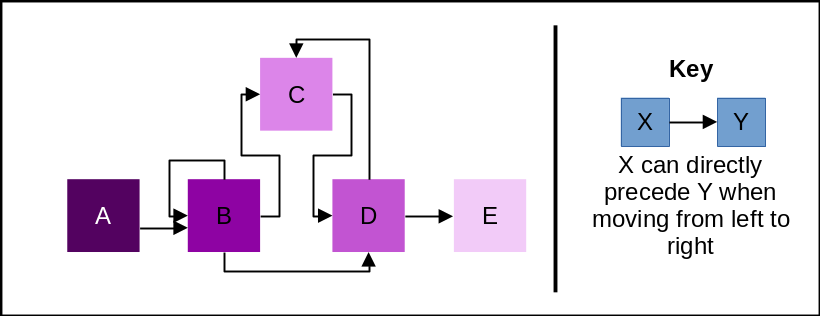Let's trace through the code using an example. Suppose we have a total of 5 distinct patterns (nb_patterns).
Well, shoot, that means I have to write a full configuration for the rules that dictate which patterns can be placed next to which other patterns.
Suppose the ruleset looks something like:
- A can be placed to the left of B
- B can be placed to the left of B
- B can be placed to the left of C
- B can be placed to the left of D
- C can be placed to the left of D
- D can be placed to the left of C
- D can be placed to the left of E
You can treat each letter as representing a unique color or type, or shape, or however you want to envision it. And I guess I need some frequencies for these letters, eh?

Let's use this: {'A': 0.05, 'B':0.5, 'C':0.15, 'D':0.25, 'E':0.05}
Notice that, under this ruleset, the only symbol that can be repeated in a contiguous chunk is "B." No wonder it has the highest frequency!
Now that that's out of the way, how does an iteration of our algorithm look? Let's step through it.